Abstract
In order to evaluate separately changes in vascular tone occurring in arteries and veins, we measured pulmonary capillary red blood cell (RBC) concentration under zone II (waterfall) conditions in isolated dog lungs rapidly frozen with Freon 12. The lungs were frozen while being perfused from artery to vein and from vein to artery breathing normal and hypoxic gas mixtures and during infusions of serotonin and histamine. Changes in capillary RBC concentration which occurred during the experimental conditions indicated an alteration in vascular resistance upstream from the capillaries. Alveolar hypoxia caused a significant decrease in capillary RBC concentration during forward perfusion, but no change from the control values during reverse perfusion. Serotonin infusion caused a decrease in RBC concentration during forward perfusion comparable with that of hypoxia and a small but significant decrease during reverse perfusion. Histamine infusion caused no change in RBC concentration from control values during forward perfusion, but a large decrease during reverse perfusion. We conclude that vasoconstriction occurs (a) exclusively in arteries during alveolar hypoxia, (b) predominantly in arteries but to a lesser extent in veins during serotonin infusion, and (c) exclusively in veins during histamine infusion.
Full text
PDF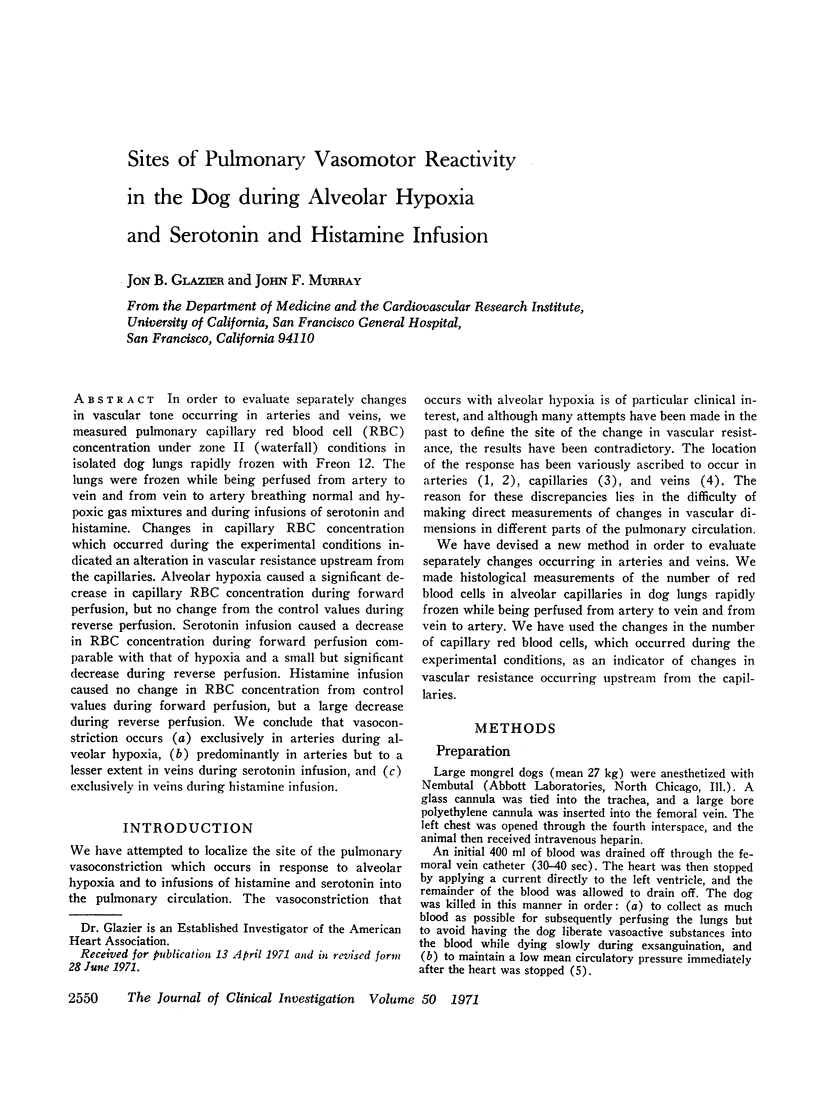
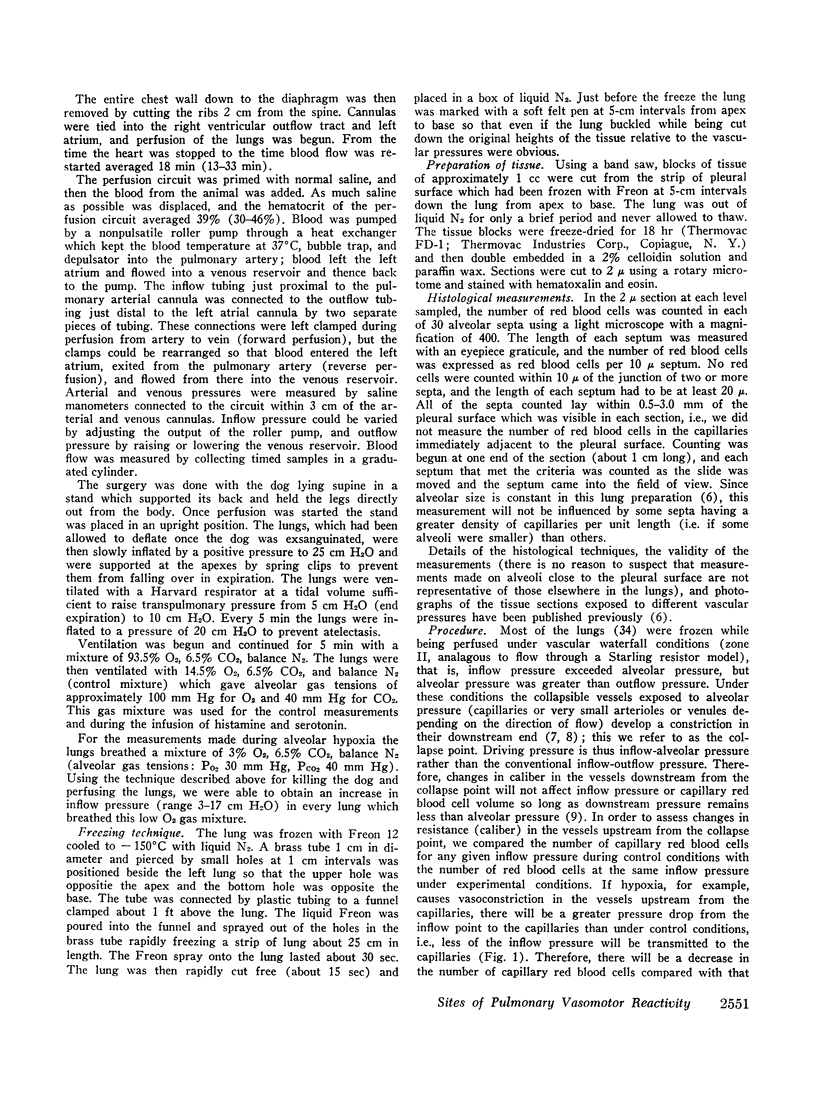
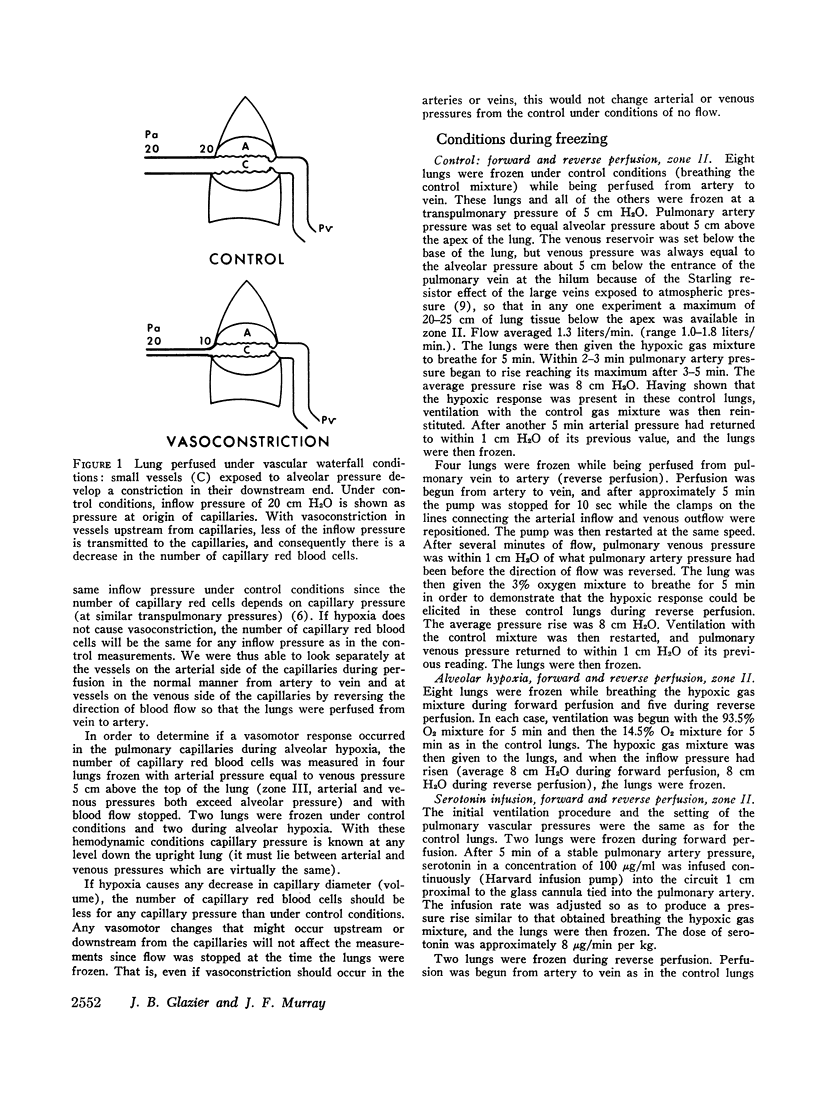
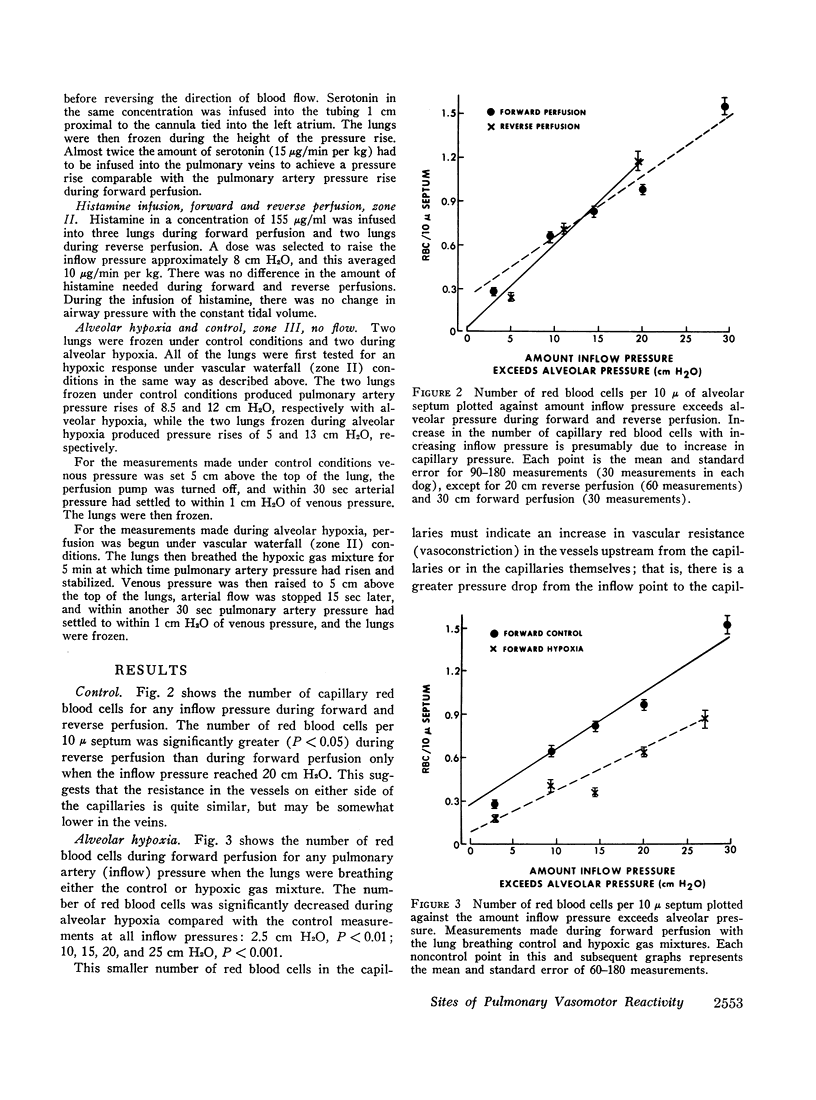
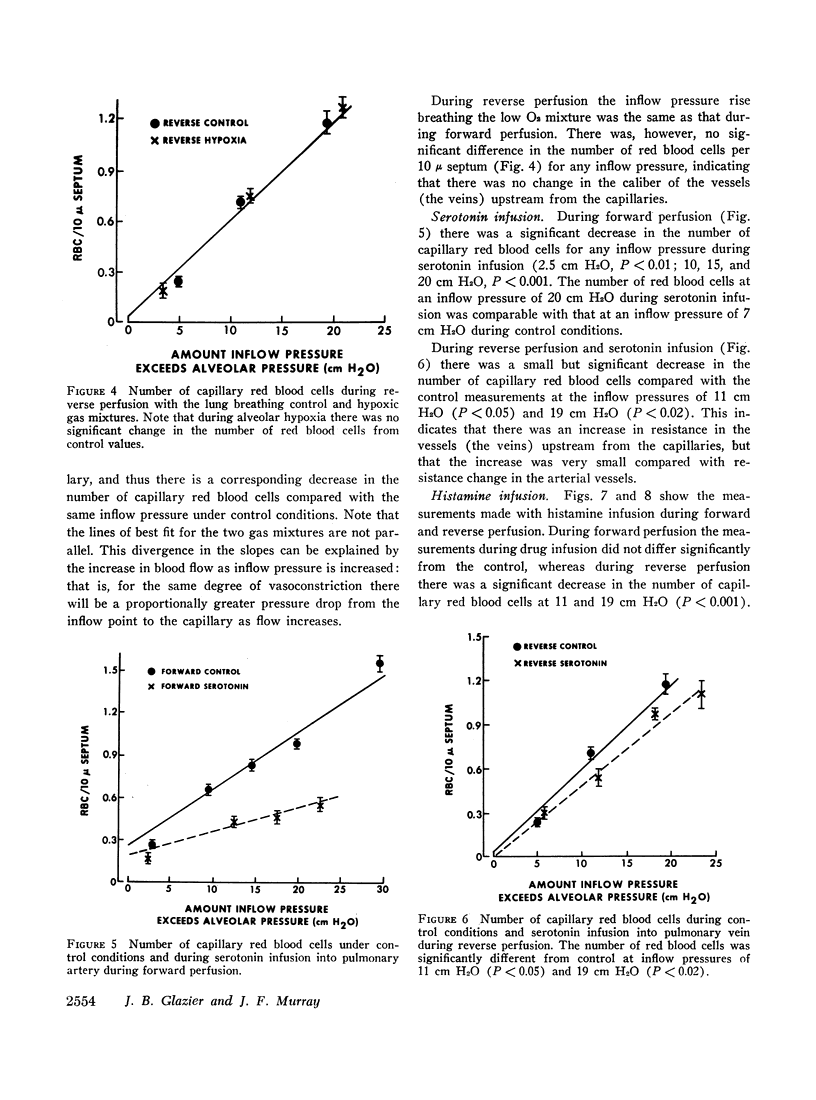
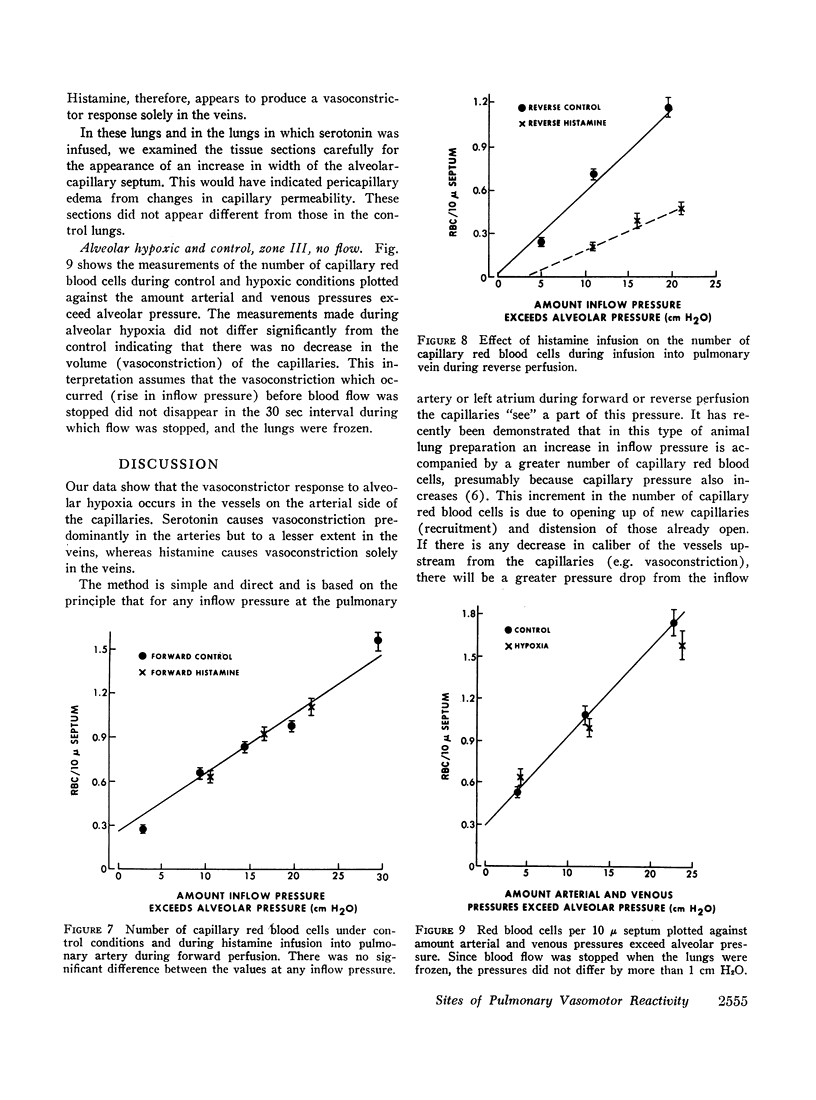
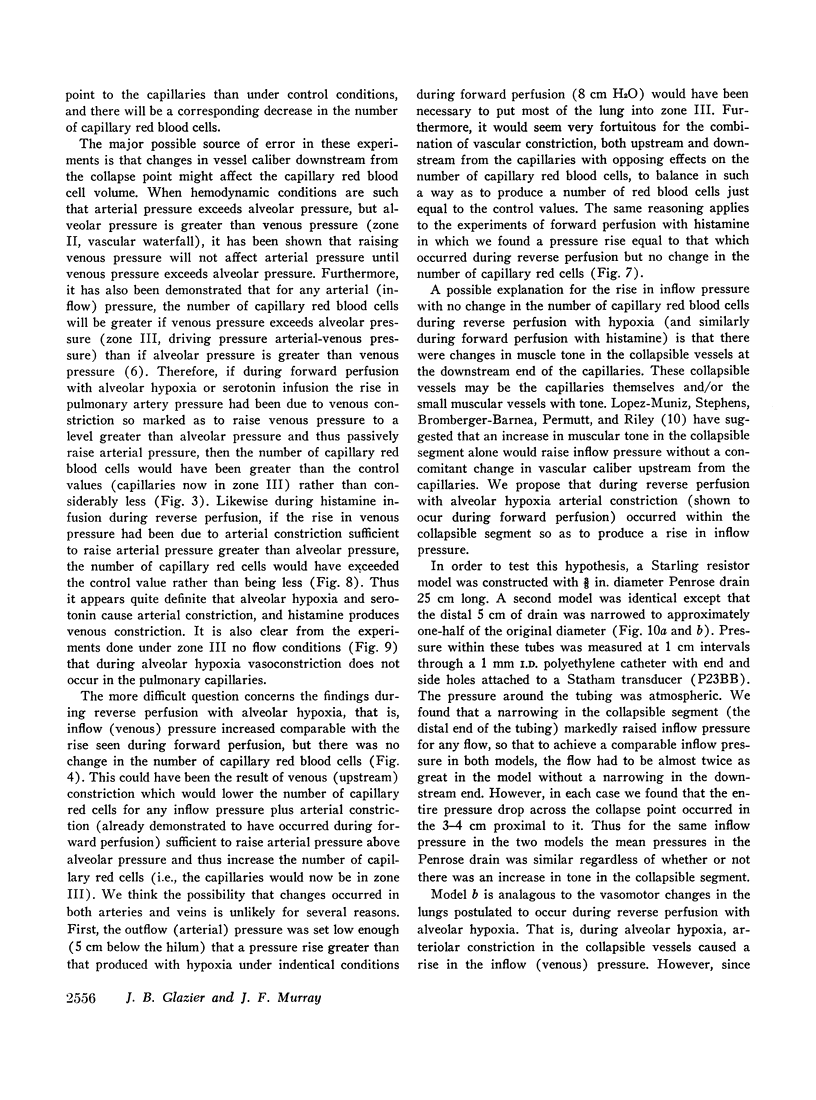
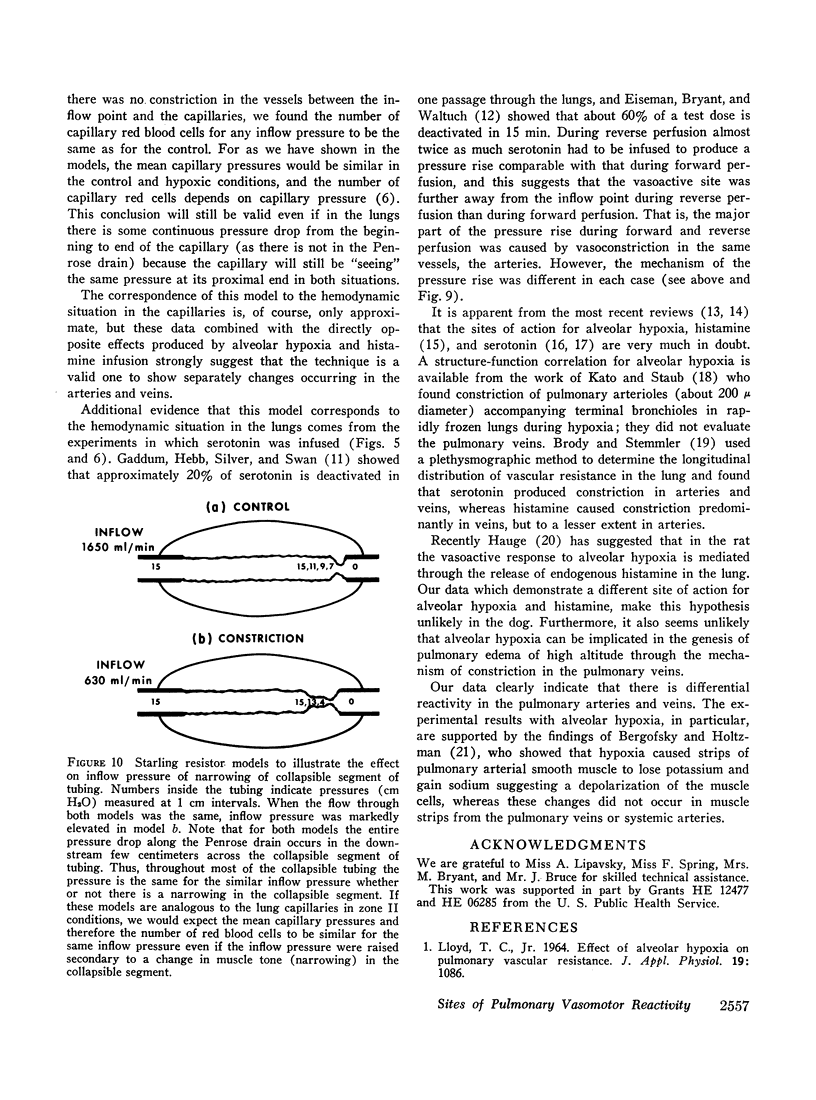
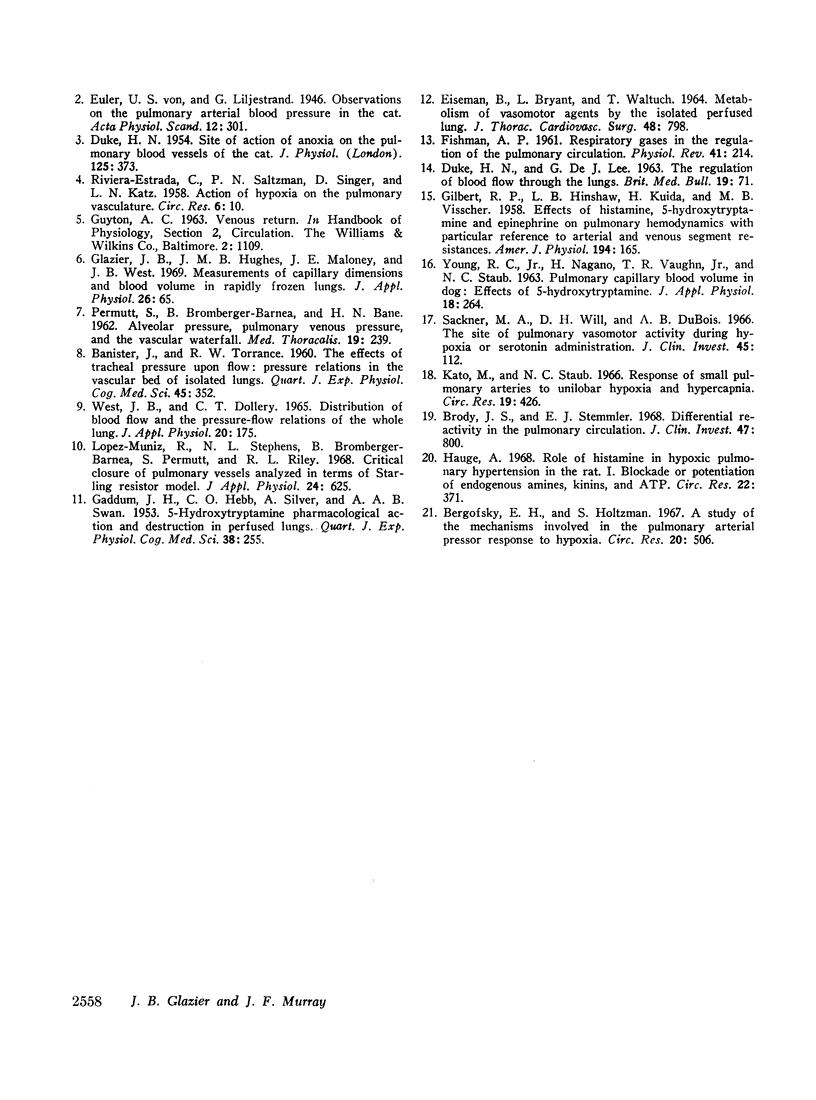
Selected References
These references are in PubMed. This may not be the complete list of references from this article.
- BANISTER J., TORRANCE R. W. The effects of the tracheal pressure upon flow: pressure relations in the vascular bed of isolated lungs. Q J Exp Physiol Cogn Med Sci. 1960 Oct;45:352–367. doi: 10.1113/expphysiol.1960.sp001491. [DOI] [PubMed] [Google Scholar]
- Bergofsky E. H., Holtzman S. A study of the mechanisms involved in the pulmonary arterial pressor response to hypoxia. Circ Res. 1967 May;20(5):506–519. doi: 10.1161/01.res.20.5.506. [DOI] [PubMed] [Google Scholar]
- Brody J. S., Stemmler E. J. Differential reactivity in the pulmonary circulation. J Clin Invest. 1968 Apr;47(4):800–808. doi: 10.1172/JCI105774. [DOI] [PMC free article] [PubMed] [Google Scholar]
- DUKE H. N. The site of action of anoxia on the pulmonary blood vessels of the cat. J Physiol. 1954 Aug 27;125(2):373–382. doi: 10.1113/jphysiol.1954.sp005165. [DOI] [PMC free article] [PubMed] [Google Scholar]
- EISEMAN B., BRYANT L., WALTUCH T. METABOLISM OF VASOMOTOR AGENTS BY THE ISOLATED PERFUSED LUNG. J Thorac Cardiovasc Surg. 1964 Nov;48:798–806. [PubMed] [Google Scholar]
- FISHMAN A. P. Respiratory gases in the regulation of the pulmonary circulation. Physiol Rev. 1961 Jan;41:214–280. doi: 10.1152/physrev.1961.41.1.214. [DOI] [PubMed] [Google Scholar]
- GADDUM J. H., HEBB C. O., SILVER A., SWAN A. A. 5-Hydroxytryptamine; pharmacological action and destruction in perfused lungs. Q J Exp Physiol Cogn Med Sci. 1953;38(4):255–262. doi: 10.1113/expphysiol.1953.sp001037. [DOI] [PubMed] [Google Scholar]
- GILBERT R. P., HINSHAW L. B., KUIDA H., VISSCHER M. B. Effects of histamine, 5 hydroxytryptamine and epinephrine on pulmonary hemodynamics with particular reference to arterial and venous segment resistances. Am J Physiol. 1958 Jul;194(1):165–170. doi: 10.1152/ajplegacy.1958.194.1.165. [DOI] [PubMed] [Google Scholar]
- Glazier J. B., Hughes J. M., Maloney J. E., West J. B. Measurements of capillary dimensions and blood volume in rapidly frozen lungs. J Appl Physiol. 1969 Jan;26(1):65–76. doi: 10.1152/jappl.1969.26.1.65. [DOI] [PubMed] [Google Scholar]
- Hauge A. Role of histamine in hypoxic pulmonary hypertension in the rat. I. Blockade or potentiation of endogenous amines, kinins, and ATP. Circ Res. 1968 Mar;22(3):371–383. doi: 10.1161/01.res.22.3.371. [DOI] [PubMed] [Google Scholar]
- Kato M., Staub N. C. Response of small pulmonary arteries to unilobar hypoxia and hypercapnia. Circ Res. 1966 Aug;19(2):426–440. doi: 10.1161/01.res.19.2.426. [DOI] [PubMed] [Google Scholar]
- LLOYD T. C., Jr EFFECT OF ALVEOLAR HYPOXIA ON PULMONARY VASCULAR RESISTANCE. J Appl Physiol. 1964 Nov;19:1086–1094. doi: 10.1152/jappl.1964.19.6.1086. [DOI] [PubMed] [Google Scholar]
- Lopez-Muniz R., Stephens N. L., Bromberger-Barnea B., Permutt S., Riley R. L. Critical closure of pulmonary vessels analyzed in terms of Starling resistor model. J Appl Physiol. 1968 May;24(5):625–635. doi: 10.1152/jappl.1968.24.5.625. [DOI] [PubMed] [Google Scholar]
- PERMUTT S., BROMBERGER-BARNEA B., BANE H. N. Alveolar pressure, pulmonary venous pressure, and the vascular waterfall. Med Thorac. 1962;19:239–260. doi: 10.1159/000192224. [DOI] [PubMed] [Google Scholar]
- RIVERA-ESTRADA C., SALTZMAN P. W., SINGER D., KATZ L. N. Action of hypoxia on the pulmonary vasculature. Circ Res. 1958 Jan;6(1):10–14. doi: 10.1161/01.res.6.1.10. [DOI] [PubMed] [Google Scholar]
- Sackner M. A., Will D. H., DuBois A. B. The site of pulmonary vasomotor activity during hypoxia or serotonin administration. J Clin Invest. 1966 Jan;45(1):112–121. doi: 10.1172/JCI105315. [DOI] [PMC free article] [PubMed] [Google Scholar]
- YOUNG R. C., Jr, NAGANO H., VAUGHAN T. R., Jr, STAUB N. C. Pulmonary capillary blood volume in dog: effects of 5-hydroxytryptamine. J Appl Physiol. 1963 Mar;18:264–268. doi: 10.1152/jappl.1963.18.2.264. [DOI] [PubMed] [Google Scholar]


